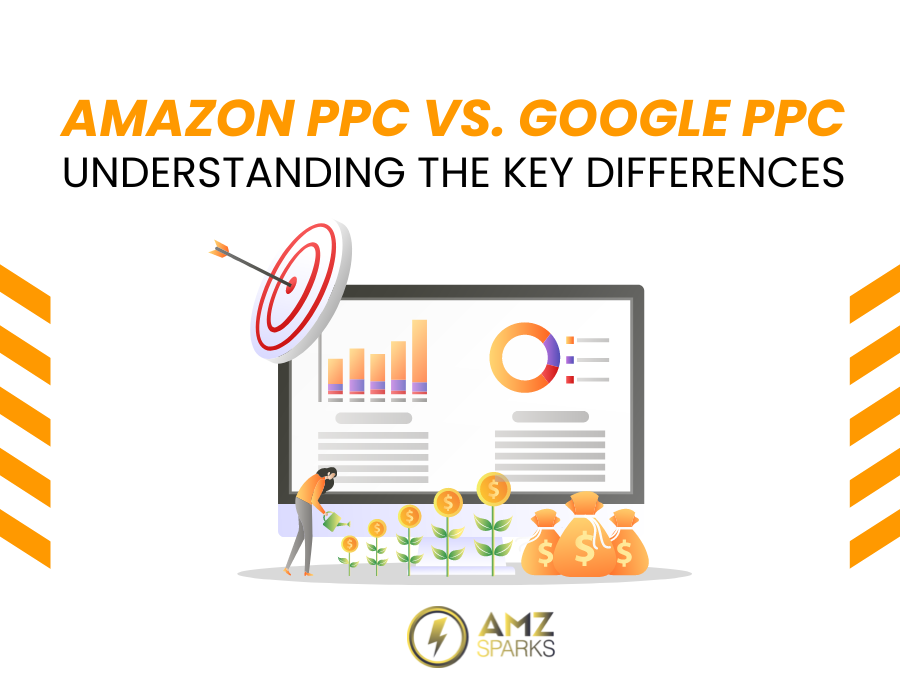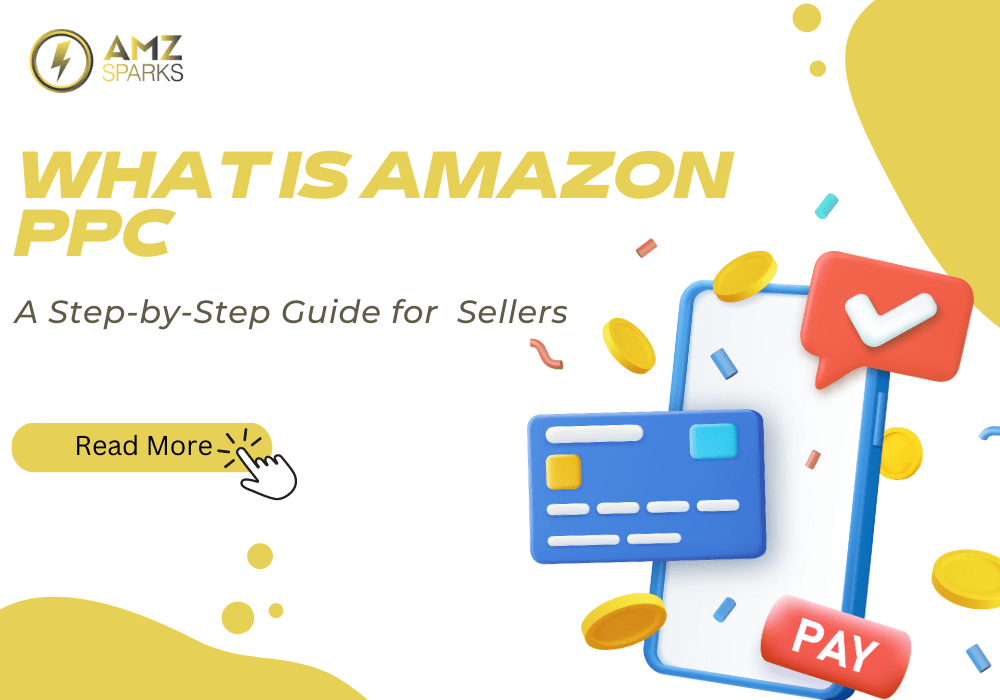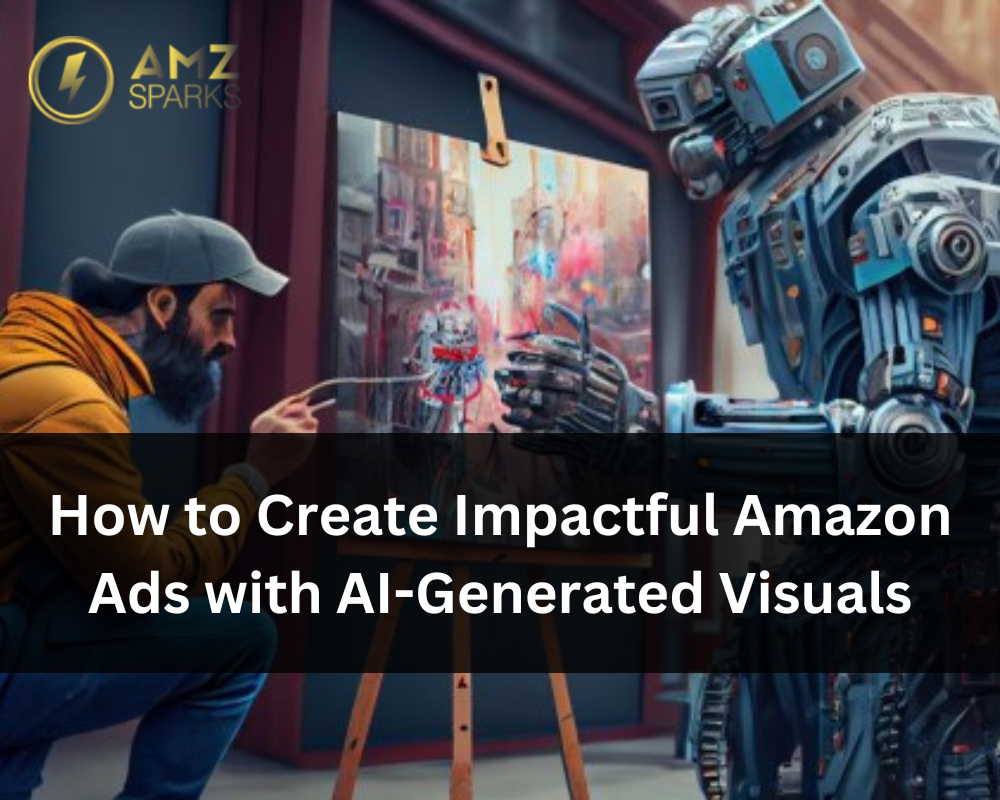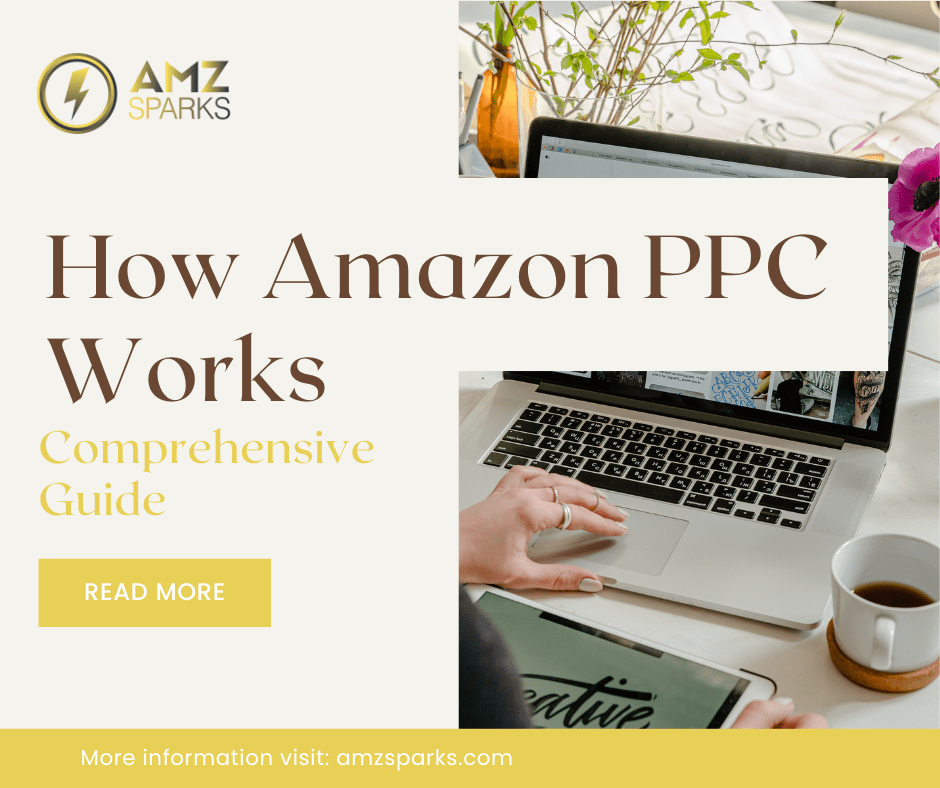Google processes over 3.5 billion searches per day globally, covering a wide range of user intents and interests. Amazon boasts over 300 million active customer accounts worldwide, comprising a highly targeted audience ready to make purchasing decisions. As the e-business is often referred to, winning the customer’s attention is not a mere piece of cake. This is where Pay-Per-Click (PPC) advertising comes in. This means that by using PPC, businesses are capable of exposing themselves to their required market within the shortest time possible and, in the process, making them very conspicuous. Like having a shop on a trade-touted business commercial strip – PPC places your products directly in the line of eager consumers and impels traffic and, consequently, sales.
Amazon PPC Vs. Google PPC sees which one offers more distinct advantages and disadvantages for e-commerce businesses.
What is Amazon PPC?
The importance of Amazon PPC Services can be well explained by relating it to paid advertising within the Amazon selling domain. It provides a way for you to create ads for particular actual products that you may be selling on Amazon. These ads are placed at different points of the shopping process, such as the search results page, the product detail page, and on the competitor’s listing (through product ads).
What is Google PPC?
Namely, Amazon PPC, also referred to as Amazon Advertising, provides less competition to the advertiser as opposed to Google PPC or Google Ads. As the most popular PPC Model, you can foster those ads that will display on the Google Search Engine Results Pages or SERPs and across millions of websites and apps that are within the Google Display Network. This enables one to target the prospect at different levels of the buyer’s cycle, ranging from the awareness level to the comparison level.
Also Read: Can I run Amazon PPC ads for products in restricted categories?
Key Differences Between Amazon PPC Vs. Google PPC
Focusing on the e-commerce market, both Amazon PPC vs. Google PPC are effective instruments, but they provide benefits for different funnel stages. In this post, let me share with you 6 significant differences to assist in knowing which will work best for your aim.
Key Points of Amazon PPC
Amazon PPC is tailored to driving sales on the world’s largest online marketplace, offering targeted advertising solutions to reach buyers actively searching for products, ensuring efficient cost-per-click results.
Target Audience
Amazon PPC’s audience is made up of enthusiastic buyers who are interested in the product. These describe shoppers that frequently access Amazon to look for products, and those in the evaluation stage.
Targeting Options
In this context, Amazon can be considered as lacking compared to Google PPC in that the former provides fewer targeting opportunities. It is possible to target by the type of products, relevance of keywords, and competition products.
Ad Formats
There are three main ad formats for Amazon PPC:
- These ads are displayed in the search network and on particular product specification pages, where it is possible to see your product together with similar goods.
- These ads brand the product entirely, meaning that they can make the customers aware of your branded products and probably visit your product-linked sites.
- These banners are displayed on many pages of Amazon, including goods categories or individual product list views.
Cost Structure
Amazon PPC works on a Cost-Per-Click (CPC) method. It stands for pay-per-click, which means that you only pay when a person clicks on your advertisement. This will make it possible to adopt a justified low-cost strategy and guarantee that the products get to the target buyers.
Bidding Strategies
Amazon PPC applies the manual bid tiering model alongside automatized bid adjustments. Here, you specify the maximum cost per keyword, and Amazon optimizes your bids to help you get maximum exposure within the defined budget.
Focus
Actually, Amazon PPC is used for a simple goal – to sell. In this case, the targeting is focused on reaching users who are close to a purchase decision, which means that the primary KPI here is clicks to sales
Also Read: The Impact of Negative Keywords in Amazon PPC
Key Points of Google PPC
Google PPC is a powerful tool for targeted advertising, offering diverse ad formats and precise audience targeting to reach potential customers effectively.
Target Audience
Google PPC has the advantage of customer reach, it targets the clients during the buying process. It makes it easy to select the band of users beginning research, those already looking for the products to compare and make a purchase.
Targeting Options
Google Pay-per-click provides many options to narrow down. Age, income, or place of residence; interests, web-siding habits, and keywords are other methods of targeting. The targeting, therefore, is precise to make sure the ads are seen by the most appropriate audience.
Ad Formats
Google PPC offers a diverse range of ad formats: Google PPC provides a diverse range of ad formats:
- Pay-per-click ads on Google SERP that can be placed in text formats with matched keywords with the site’s content.
- A type of ad format of the internet that is placed on different websites and applications affiliated with GDN.
- Mobile screen ads target users when they are browsing YouTube and other similar video sites.
- Product listings with images and prices on Google Shopping and other partners, that is the answer to what Google Shopping is.
Cost Structure
Google PPC primarily stands for pay-per-click, like Amazon PPC, and it mainly works on the CPC model. Cost per click is only applied because you only pay after anyone out there clicks on the ad. Also, Google Ads has a CPM, Cost per Thousand Impressions model for brand-building at cheap rates to a larger audience.
Bidding Strategies
The automatic and the manual bidding. Automatic feature categories focus on bid adjustments for clicks, conversions, or a fixed bid cost per desired outcomes or return on advertising cost (ROAC). Manual bidding means that you have to specify the maximum bid that the search engine can spend on each keyword.
Focus
Google PPC centers on diverse goals depending on one’s campaign methods. They can be used to create brand familiarity, inform consumers, take potential customers to your site, or push them to buy on your site or at Amazon.
Common Amazon PPC Mistakes to Avoid
It is vital to keep an eye on PPC advertising since managing successful PPC campaigns is quite delicate. Here, some of the common mistakes to avoid on both Amazon PPC and Google ads are discussed to enable you to get the most out of your campaigns.
Amazon PPC Pitfalls
- As much as relevant keywords drive the right traffic that is your ideal customer, irrelevant keywords on the same account are a drain on your expenses. These are keywords that should not be matched with your ads and, therefore, should be merged with the negative keyword list.
- It is also important not to bid too low, as this will affect your ad placements. Continuously observe bids and make amendments to ensure that your ads will pop up as users search for the right products.
Google Ads Campaign Missteps
- To get to the wrong audience, one has to select either too general or unrelated keywords. Therefore, it is necessary to conduct proper keyword research in order to reach out to the users who are explicitly seeking what you have to offer.
- It is seen that most of the searches are conducted on mobile devices; therefore, make sure that your ads are mobile-friendly. This includes using clean language that spells out the next step and a good layout of the website.
Also Read: What is the ACoS Metric in Amazon PPC?
Conclusion
PPC is one of the great tools in the extensive world of e-commerce and if you hold the right weapon, you are the winner. Amazon PPC is unbeatable when it comes to the customer who is ready to buy, and Google PPC helps to attract a wider audience and cover the potential consumer during his journey with a purchase. The right platform depends on what the specific user intends to or wants to achieve.
FAQs
Which platform is better, Amazon PPC or Google PPC?
Everybody is hunting for the best, yet there is no such thing as a better platform. Amazon PPC targets users who are actively searching for products, while Google PPC has the coverage of a broader audience. Determine the best platform for your purpose out of all the available ones.
How can I improve my Amazon PPC conversion rates?
Ensure that a given product matches the keywords it is placed under, that bids match any competitor bids, and that high-quality images and compelling ad text are used.
Can AMZSparks help me with my Amazon PPC campaigns?
Yes! AMZSparks provides professional PPC management services, including Amazon PPC Services, to ensure that your campaigns are fine-tuned, your target audience is adequately identified, and your ROI on your ad dollars is the highest possible.



